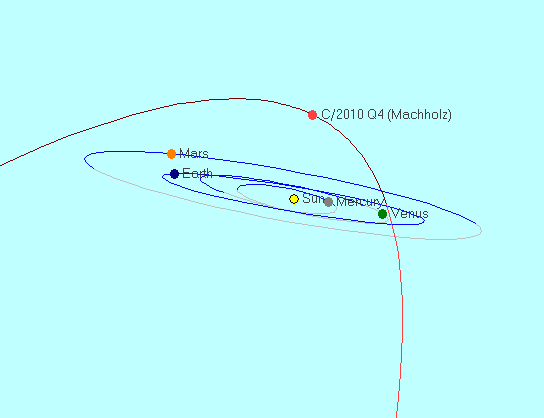
Comet C/2010 F4 (Machholz) is currently 11th magnitude. At this brightness, only observers with moderate-sized telescopes under dark skies will see it. Though the orbit is still somewhat uncertain, the comet appears to reach perihelion in early April at a distance of ~0.6 AU from the Sun. Unfortunately, it will not get much brighter. In fact, seeing it will only get more difficult as the comet moves closer to the Sun. Its increasing proximity to the Sun and the bright Moon now located in the morning sky means even advanced observers will have a hard time seeing it after a few days. It is possible the comet may only be observed for a week or so and then lost for the ages.
The image above shows the orbit of the comet. With an inclination of ~90 degrees, its orbit is perpendicular to the orbits of the planets which is not unusual for a long-period comet. The big question is how was this comet missed by all of the professional asteroid/comet surveys. Nowadays most comets are found while very faint (17-19th magnitude) and a few years before perihelion. This comet probably escaped detection because it was located near the Milky Way for the past year. The Milky Way is so full of stars that the current crop of asteroid/comet surveys have a difficult time finding any objects there. As a result, many surveys avoid the Milky Way all together.
Congrats to Don Machholz! And thanks for showing us that persistence (he hunted for 607 hours since his last find in 2004) and old-fashioned comet hunting can still pay off in this era of computers and automation.



Reader Comments
to our Newsletter